WEnRV travel news, products, and industry trends
Snowbird Roads North: Navigating Spring Conditions
Spring in North America officially arrives when the Earth’s angle to the sun appears directly over the equator. This is the equinox and happens on March 20 this year. Also, Around this time, snowbirds heading north start their long treks home.
For lovers of the outdoors, spring engenders feelings of delight as the temperatures slowly increase and trees and plants start budding. The spring thaw slowly sweeps north as each day passes. But even as the weather improves, some potential snags may stand in the way for travelers.
Spring Forward (With Caution)
The spring thaw can present certain challenges to road travelers. Northern-bound snowbirds traditionally encounter much heavier traffic as they make the long trip home. This higher volume of RV traffic fills many of the available campgrounds relatively early as dark falls. RV owners that forge on into the night hoping to gain a couple of extra hours often have trouble getting a campsite.
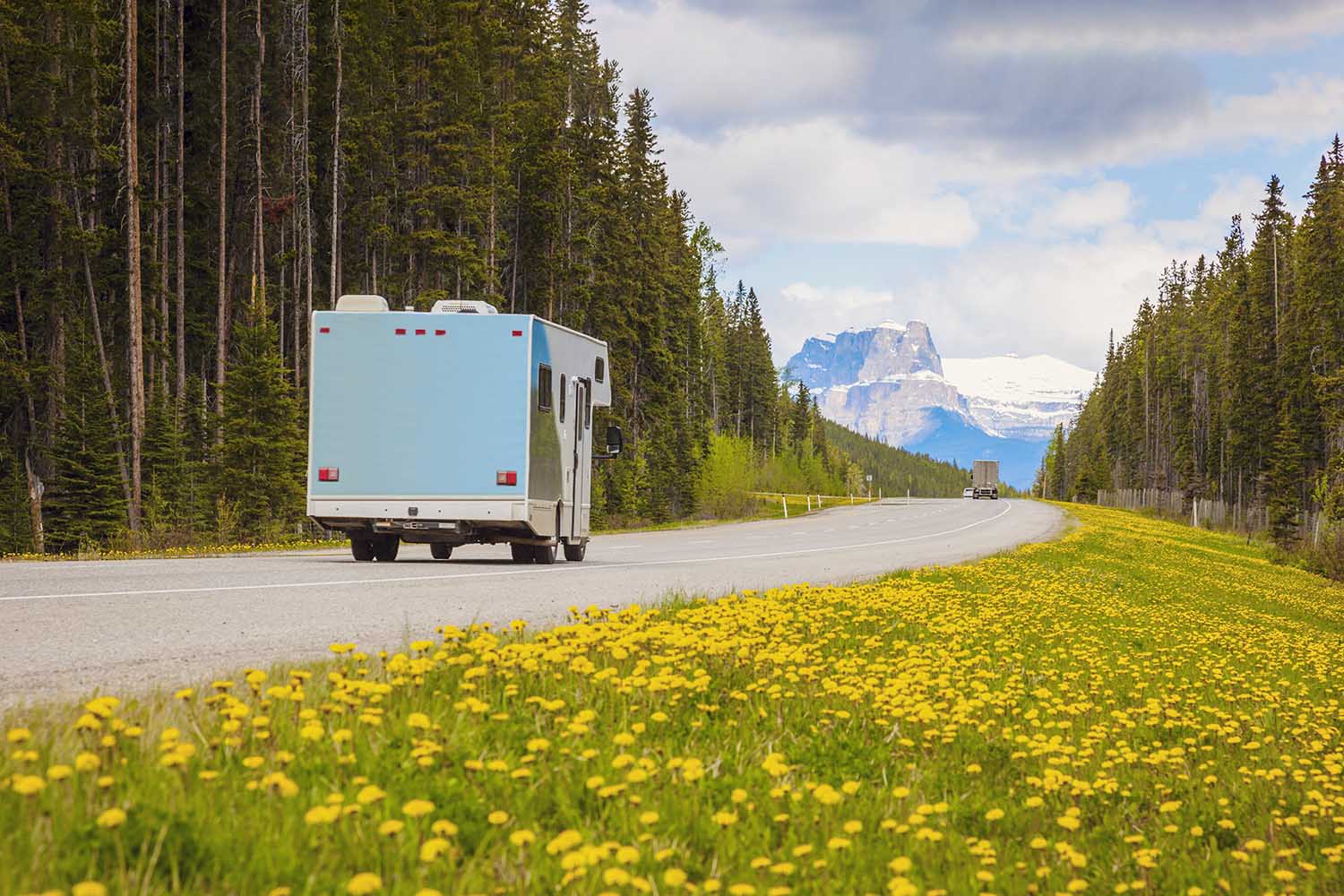
Photo: Getty Images
Additionally, most RV owners are used to arriving at their destination RV park well before sunset. This is probably due to the night falling dark later during most of the summer season. However, for those traveling a long journey, as many snowbirds heading north, keeping such arrival habits may be difficult. This leaves the challenge of backing onto an unfamiliar campsite in the dark. Here, the driver and parking spotter should agree on a communication signal, with a flashlight or similar device, to ensure safe docking.
Caution should be taken when entering and departing campgrounds during the spring thaw. Often, the ground’s frost is thawing as warmer temperatures arrive. This can leave surfaces very soft, possibly allowing a vehicle’s tires to sink and become stuck. Walking the site prior to backing in can be well worth the time. Also, avoiding driving on any grass should be done as such surfaces generally are very soft during spring thaws.
Slippery Spring Driving
Spring weather can present some surprises. Sudden changes brought on by the approach of cold fronts can produce heavy rain, hail, or snow with heavy winds. Driving conditions during these outbursts can be challenging for any vehicle, let alone a large motorhome or towed combination. Heavy downpours can cause other dangerous conditions, such as creating standing water on portions of the roadways, mudslides, and rockslides. Hitting a pooled water area can cause the front tires to hydroplane, resulting in the loss of steering control. A mudslide can not only cause complete loss of a vehicle’s control, but may also bring with it damaging trees, rocks, and other debris onto the road.
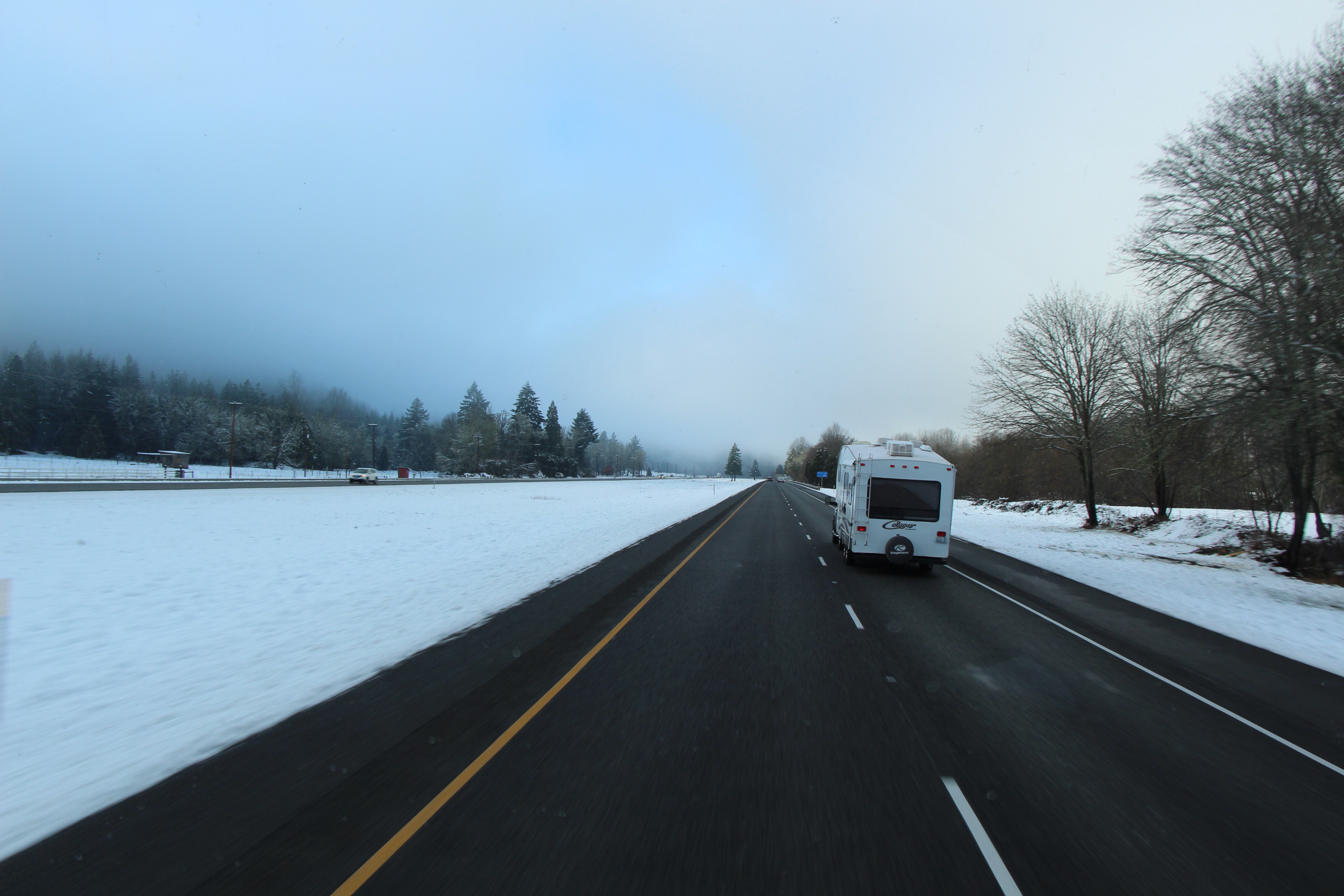
Photo: Peter Mercer
Early spring and late winter squall conditions are common in many regions. In addition, spring is noted to have the most tornado events recorded in the country. Certainly, not a place for snowbirds heading north.
The best advice should you encounter any of these adverse conditions while traveling is to find a safe place to pull over and sit it out. However, if you think you are facing a tornado, you should seek a solid shelter without delay.
Flooding Facts
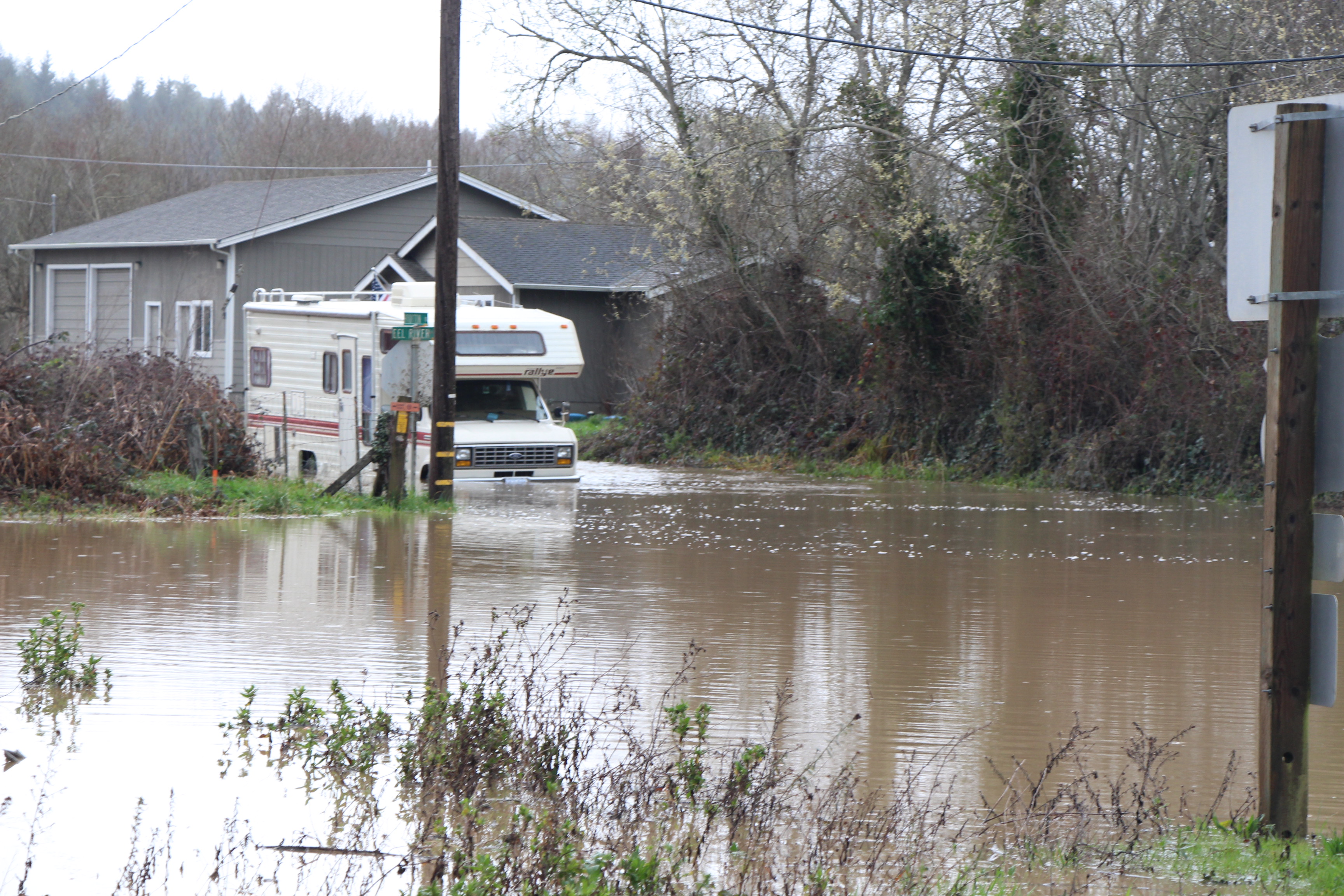
Photo: Peter Mercer
Flooding in the spring is possible in many regions and in areas with major waterways. The warmer temperatures and sunny days in early spring can cause rapid snow melt in higher elevations; the runoff from rapid melting can quickly cause the streams and rivers to swell and often overflow. Flooding can wash out roadways and threaten bridge structures.
If you come upon a flooded section of the roadway, do not attempt to travel through it unless you are positive it is relatively shallow and not moving. Keep in mind, driving on any flooded road poses a risk. Do not attempt it if the water is flowing rapidly across the path. Seek high ground and look for other travel routes or wait it out.
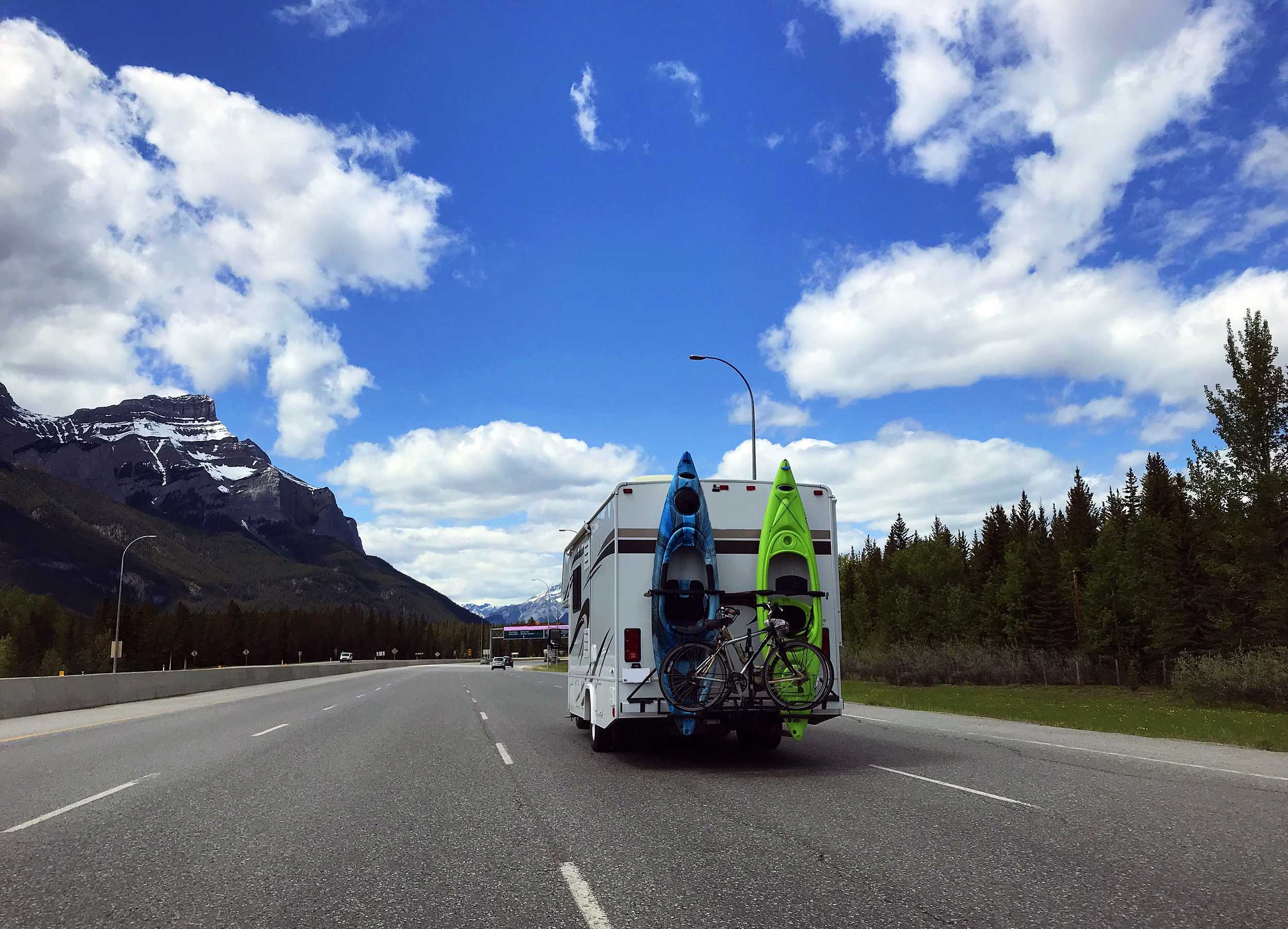
Traveling north through Montana. Getty Images
Ice on the Road
Alternating temperatures in the spring often fluctuate from freezing at night to mild through the day. This yo-yo effect can create treacherous black ice in some areas of the highway. Melting ice and snow drains down on sections of the roadway during the warm of the day. The wet surface freezes through the night, leaving glaring ice shadowing what was a wet patch. This type of slippery hazard can be present well into the following morning or possibly longer, depending on the next day’s weather. It is best to reduce speed in areas that may be prone to this type of hazard.
Lots of Snow
A stop to replenish the RVs food supplies requires locating a grocery store with suitable access for your rig to be able to park. In the early spring, you might encounter more than just parked vehicles in the store’s parking lot. Often, several piles of snow left by contracted snow plow equipment are scattered about the property. These piles of snow can take up a fair amount of otherwise usable parking spots. This results in a somewhat more congested parking lot.
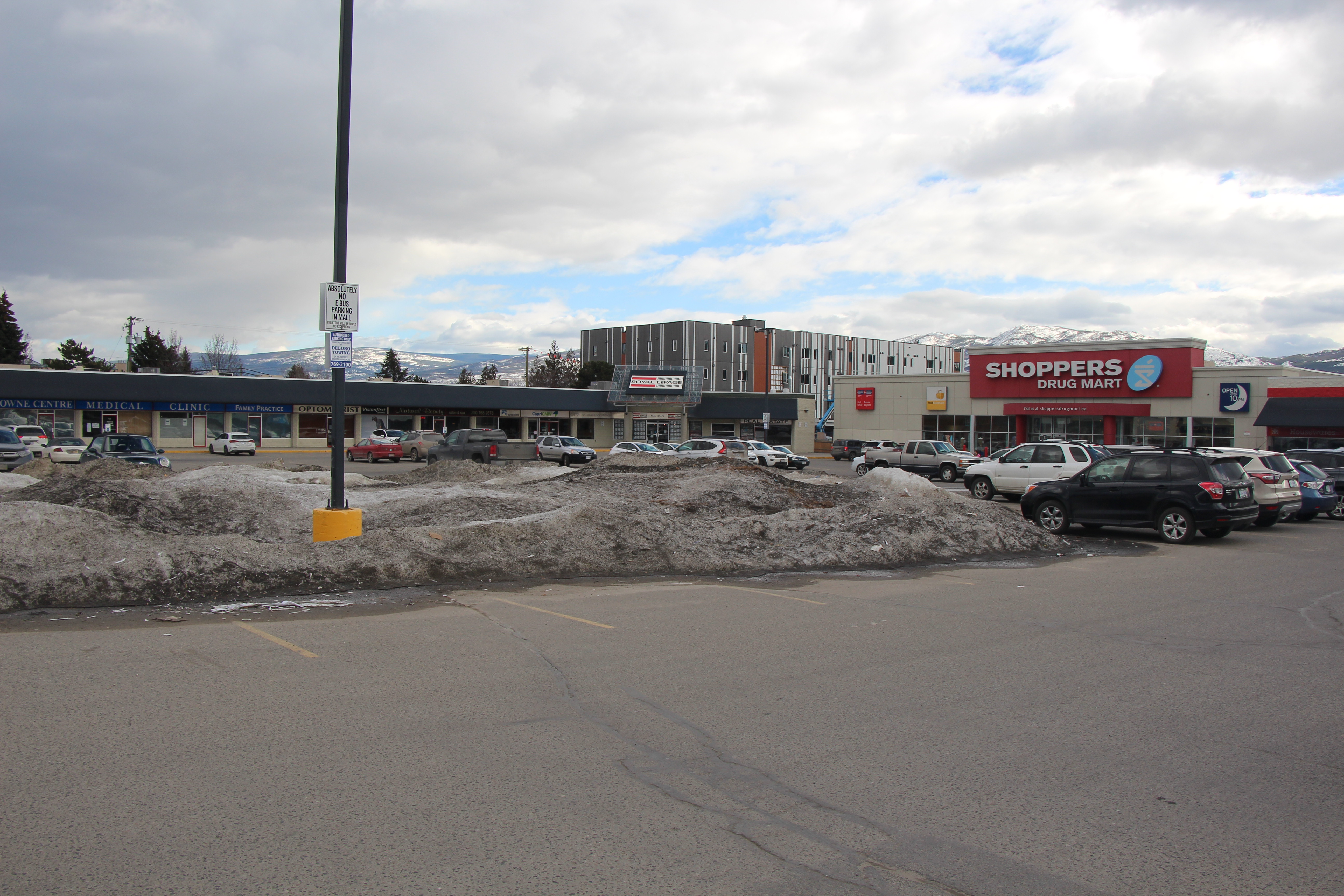
Photo: Peter Mercer
Depending on the size and configuration of your RV, this may limit the maneuverability and ability to find a suitable parking spot at your chosen location. It may even result in being trapped in the lot by shoppers who arrive after you. Many non-RVers have no realization of the room required to maneuver an RV, or worse, a tow vehicle-trailer combination in tight quarters. To help alleviate the chances of such issues, a good visual survey of the selected parking lot should be carried out prior to committing to and entering the property. If it looks tight it might be well to try to locate a less congested site that is snowbird-friendly.
Warming Up to Spring Travel
Well, these are just some things you may face when venturing out on the road during the yearly spring thaw. Of course, the exact dates of thawing and warm temperatures vary depending on your location. Cold weather also can drag on for a considerable time.
Regardless of when spring arrives, be prepared to be flexible with your daily mileage goals and overall travel time schedule. Drive safe, and sign up for a reliable Roadside Assistance plan to prepare for possible breakdowns or accidents.
Peter Mercer – With a New Season’s Arrival
The post Snowbird Roads North: Navigating Spring Conditions appeared first on Good Sam Camping Blog.

Copyright
© Good Sam Camping Blog


